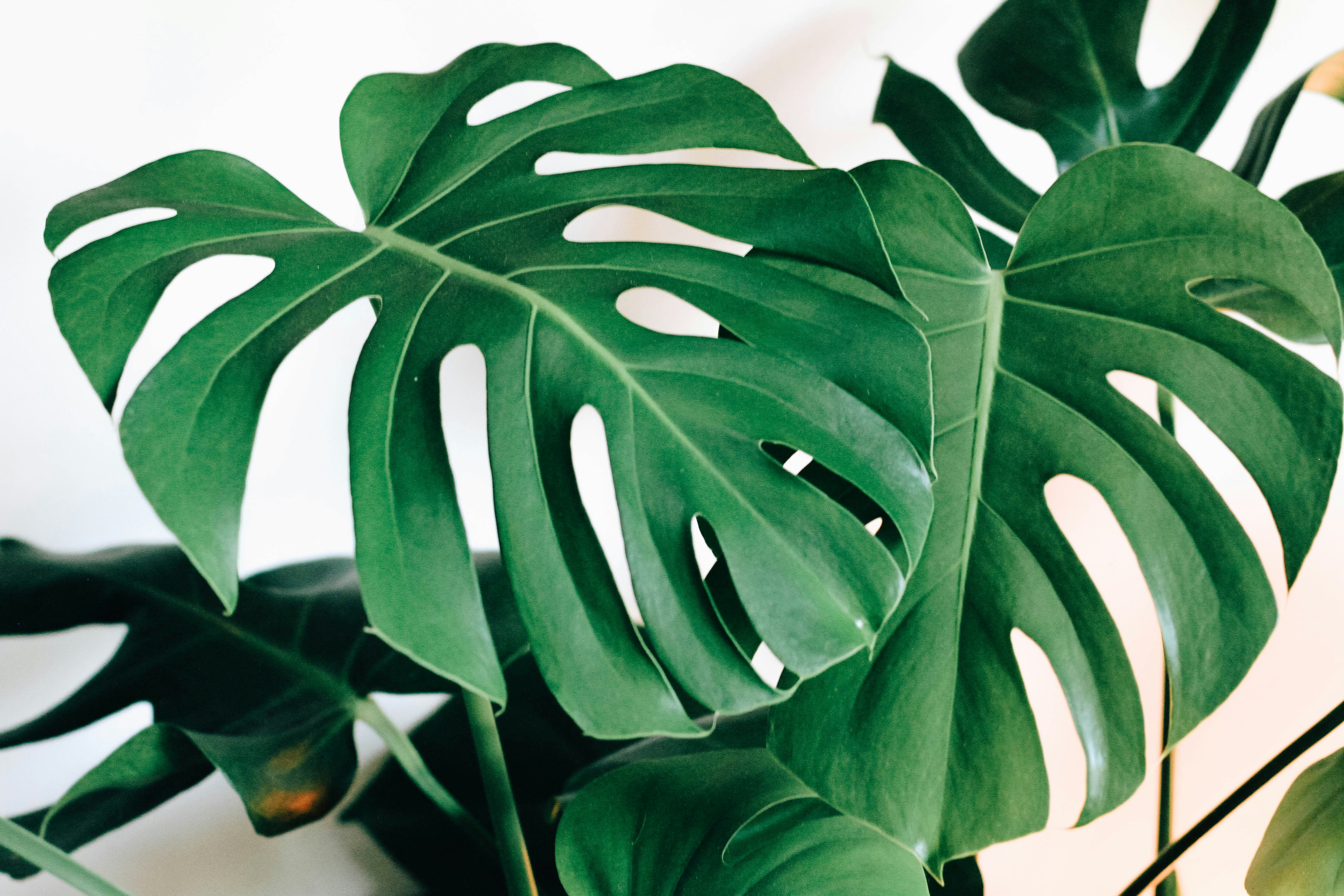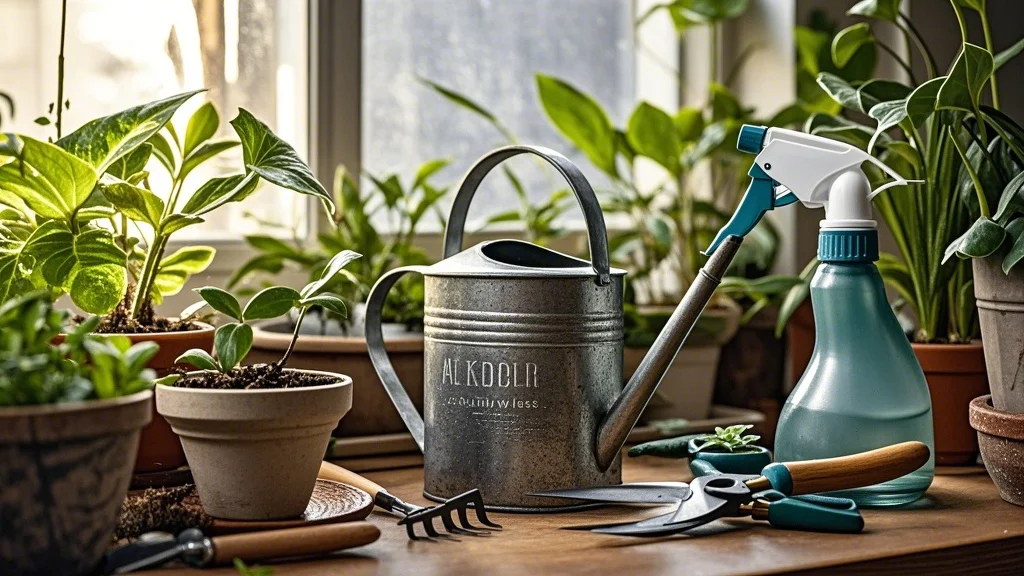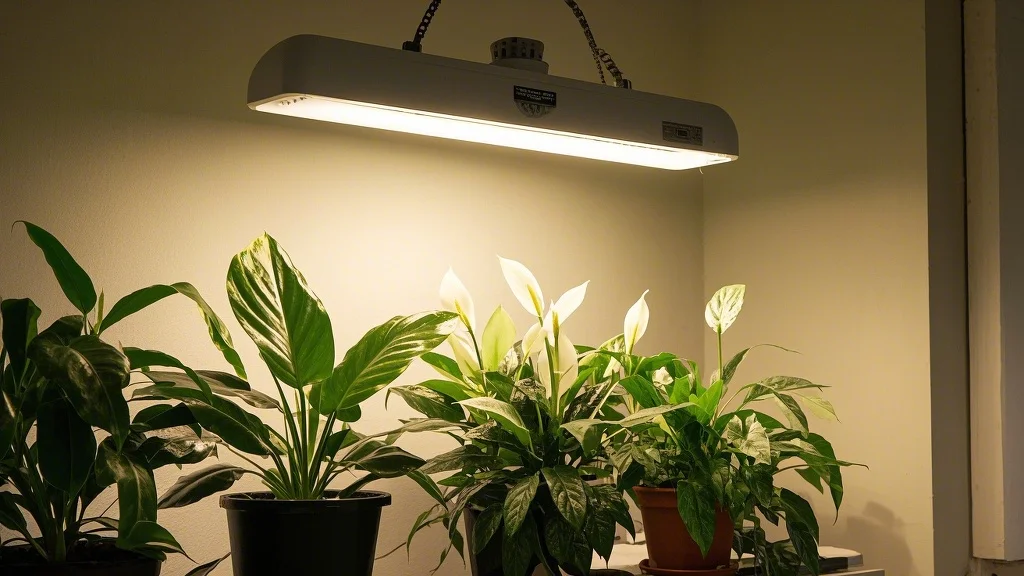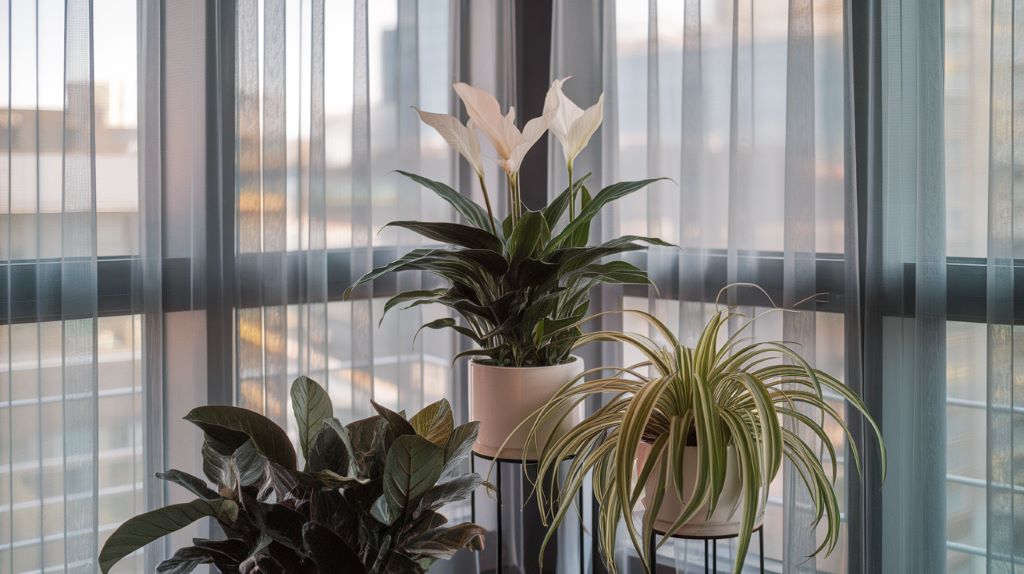Contents
- 1 Why Plant Rotation Matters in Low Light Environments
- 2 Assessing Your Light Situation
- 3 Understanding Your Plants’ Light Requirements
- 4 Creating Your Rotation Schedule
- 5 Practical Implementation Tips
- 6 Signs Your Rotation Schedule Needs Adjustment
- 7 Supplementing Natural Light
- 8 Creating Microenvironments
- 9 Case Study: A Successful Low-Light Rotation System
- 10 Common Mistakes to Avoid
- 11 Fine-Tuning Your System
- 12 Conclusion
- 13 Quick Reference: Plant Rotation Schedule Template
Why Plant Rotation Matters in Low Light Environments
Living in an apartment with limited natural light doesn’t mean you have to give up on your dream of being surrounded by thriving houseplants. The key to success lies in understanding how to maximize the light you do have through strategic plant rotation. By creating a thoughtful schedule to move your plants between different light zones, you can ensure each plant receives the light it needs to flourish, even in challenging conditions.
Plant rotation is especially crucial for apartment dwellers with north-facing windows or buildings that block sunlight. Rather than watching your green friends slowly decline, a rotation system allows you to share the limited resource of light equitably among all your plants.
Assessing Your Light Situation
Before creating a rotation schedule, you need to understand exactly what you’re working with:
Map Your Light Zones
Start by identifying the different light zones in your space:
-
Prime light areas: Spots directly in front of windows (especially south and west-facing)
-
Medium light areas: Areas a few feet away from windows or near east-facing windows
-
Low light areas: Interior spaces away from windows or near north-facing windows
Take notes throughout the day to observe how light moves through your space. Some areas might receive bright, indirect light for only a few hours, while others may get consistent but dim light all day.
Light Measuring Tools
For a more precise assessment:
-
Light meter apps: Free smartphone apps can measure foot-candles or lux in different areas
-
Light meter devices: More accurate dedicated tools for serious plant collectors
-
The shadow test: Hold your hand 12 inches above a surface at midday—sharp shadows indicate bright light, fuzzy shadows suggest medium light, and barely visible shadows mean low light
Understanding Your Plants’ Light Requirements
Not all plants have the same light needs. Categorize your collection based on their requirements:
High Light Plants
These plants need 4+ hours of direct sunlight or bright indirect light all day:
- Succulents
- Cacti
- Fiddle leaf figs
- Citrus plants
- Most flowering plants
Medium Light Plants
These can thrive with bright, indirect light for most of the day:
- Pothos
- Philodendrons
- Monstera
- Spider plants
- Peace lilies
Low Light Tolerant Plants
These can survive (though may grow slowly) in dimmer conditions:
- ZZ plants
- Snake plants
- Cast iron plants
- Certain ferns
- Chinese evergreens
Create a plant inventory with each plant’s ideal light requirements. This will be the foundation of your rotation schedule.
Creating Your Rotation Schedule
Basic Principles of Plant Rotation
-
Priority rotation: Give high-light plants priority access to your brightest spots
-
Duration-based rotation: Plants with higher light needs stay longer in prime spots
-
Seasonal adjustments: Rotate more frequently in winter when light is scarcer
-
Rest periods: Allow plants time in their ideal conditions to recover from less-than-ideal placements
Sample Rotation Frameworks
Weekly Rotation System
This works well for apartments with 1-2 prime light locations:
Week 1: Group A in prime light, Group B in medium light, Group C in low light
Week 2: Group C in prime light, Group A in medium light, Group B in low light
Week 3: Group B in prime light, Group C in medium light, Group A in low light
Repeat cycle
Bi-Weekly Rotation
Better for plants that need more recovery time:
Weeks 1-2: High-need plants in prime locations
Weeks 3-4: Medium-need plants in prime locations
Weeks 5-6: Low-need plants get their turn (though they need it least)
Repeat cycle
Priority-Based System
This approach gives more time to plants with higher light requirements:
Days 1-10: High-light plants in prime spots
Days 11-15: Medium-light plants in prime spots
Days 16-18: Low-light plants in prime spots
Repeat cycle
Practical Implementation Tips
Tracking Your Rotation
Keeping track of your rotation schedule is essential:
-
Plant rotation app: Use plant care apps with location tracking features
-
Calendar reminders: Set recurring calendar alerts for rotation days
-
Physical rotation chart: Create a visual chart on your wall near your plants
-
Plant tags: Color-code plant tags to indicate which rotation group they belong to
Making Rotation Day Efficient
-
Group similar plants: Organize plants by light needs and size for easier moving
-
Use plant trays: Place smaller plants on trays to move multiple plants at once
-
Consider plant weight: Use plant caddies with wheels for heavier specimens
-
Maintain consistent care: Keep watering and fertilizing schedules consistent despite location changes
Signs Your Rotation Schedule Needs Adjustment
Watch for these indicators that your current rotation isn’t working:
Plant Stress Signals
- Leggy, stretched growth (etiolation)
- Yellowing or dropping leaves
- Reduced or stopped growth
- Failure to flower
- Smaller new leaves than previous growth
Seasonal Adjustments
Your rotation schedule should change with the seasons:
-
Winter: More frequent rotation as daylight hours decrease
-
Summer: Longer periods in each position as light is more abundant
-
Spring/Fall: Transition periods requiring moderate adjustments
Supplementing Natural Light
Sometimes rotation alone isn’t enough. Consider these supplementary strategies:
Light Reflectors
- Place mirrors strategically to bounce light deeper into your space
- Use white or light-colored walls to reflect more light
- Position plants near reflective surfaces like white furniture
Grow Lights
When natural light is insufficient, grow lights can be game-changers:
-
Full-spectrum LED grow lights: Energy-efficient and effective for most plants
-
Clip-on grow lights: Perfect for targeting specific plants in a collection
-
Light strips: Can be mounted under shelves to illuminate plants below
-
Timer-controlled systems: Automate supplemental lighting to maintain consistent schedules
Creating Microenvironments
Rather than moving plants constantly, you can create specialized zones:
Light-Enhancing Stations
-
Plant shelves near windows: Tiered shelving allows multiple plants to access window light
-
Glass cabinets: Create humid, bright environments for tropical plants
-
Window film solutions: Use light-diffusing films to spread harsh direct light more evenly
Humidity Considerations
Remember that light isn’t the only factor—humidity often varies with light exposure:
- Rotate humidity-loving plants together
- Use humidity trays in drier areas of your home
- Consider small humidifiers for plants that need consistent moisture
Case Study: A Successful Low-Light Rotation System
Sarah, who lives in a north-facing apartment in Chicago, successfully manages 30+ plants with this rotation system:
- Her brightest spot (a small west-facing kitchen window) hosts her high-light plants for 10 days each month
- The medium-light area (living room with north-facing windows) serves as the transition zone
- Plants spend their “rest” time in the dimmer bedroom and bathroom
- She supplements with grow lights during winter months
- Every Sunday is rotation day, with plants moving according to her smartphone calendar reminders
By following this system, she’s maintained healthy growth even for traditionally “high-light” plants like her small jade plant and string of pearls.
Common Mistakes to Avoid
Rotation Pitfalls
-
Rotating too frequently: Plants need time to adjust to new light conditions
-
Inconsistent schedules: Skipping rotations disrupts the equity of light distribution
-
Ignoring seasonal changes: Using the same schedule year-round despite light variations
-
Forgetting to rotate: Set reminders to maintain your schedule
Environmental Shock
-
Temperature variations: Avoid placing plants near drafty windows in winter, then moving to warm interiors
-
Humidity changes: Be aware that window areas may be drier than interior spaces
-
Water needs changes: Plants may need different watering frequencies in different positions
Fine-Tuning Your System
Observation and Adaptation
The most successful plant rotators are keen observers:
- Keep notes on how plants respond to different positions
- Take monthly photos to track subtle changes in growth patterns
- Be willing to adjust your schedule based on plant feedback
- Consider the “happiness factor”—some plants clearly prefer certain spots
Special Considerations for Specific Plants
Some plants have unique needs that affect rotation:
-
Flowering plants: Keep in prime light during budding and flowering periods
-
Dormant plants: Can spend more time in lower light during rest periods
-
New plants: Give recent additions extra time in ideal conditions before including in rotation
-
Propagations: Young cuttings often need more consistent light than established plants
Conclusion
Creating an effective plant rotation schedule is both an art and a science. It requires understanding your space, knowing your plants, and being willing to adjust as needed. With thoughtful planning and consistent implementation, even the darkest apartment can support a diverse and thriving plant collection.
The key is patience and observation—your plants will tell you if your rotation system is working through their growth and overall appearance. By distributing your limited light resources equitably among your plant family, you’re ensuring that every green friend gets its moment in the sun (or what passes for sun in your apartment).
Remember that plant care is a journey, not a destination. Your rotation system will evolve as your collection grows and as you become more attuned to the unique needs of each plant. Embrace the process, and enjoy watching your urban jungle thrive despite the challenges of low-light living.
Quick Reference: Plant Rotation Schedule Template
| Plant Group | Light Needs | Prime Light Duration | Medium Light Duration | Low Light Duration |
|---|---|---|---|---|
| High-need | 4+ hrs direct | 10-14 days | 5-7 days | 2-3 days |
| Medium-need | Bright indirect | 7-10 days | 7-10 days | 5-7 days |
| Low-need | Tolerates low light | 5-7 days | 7-10 days | 10-14 days |
Adjust these timeframes based on your specific conditions and plant responses. Happy rotating!











